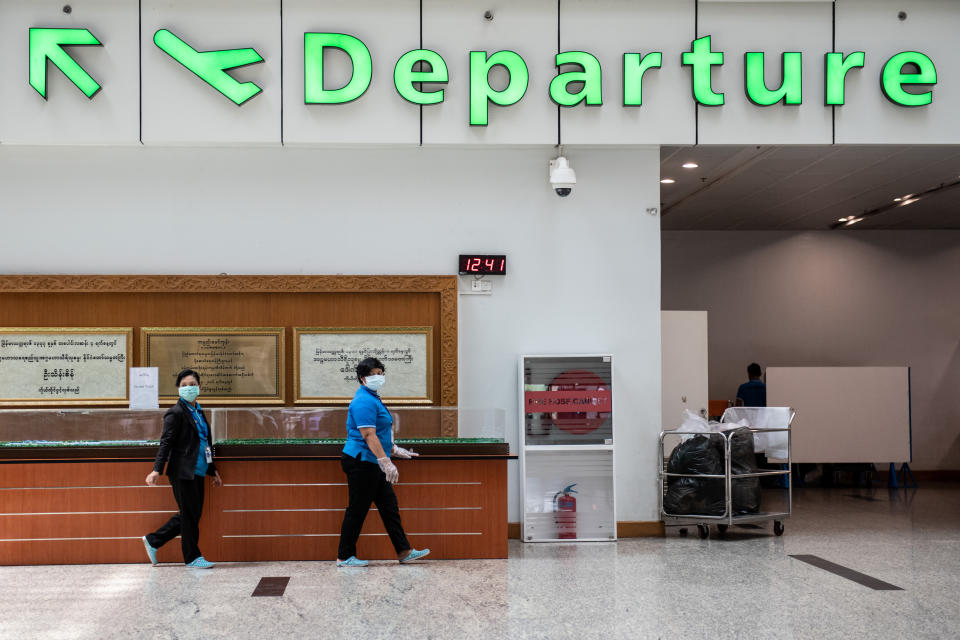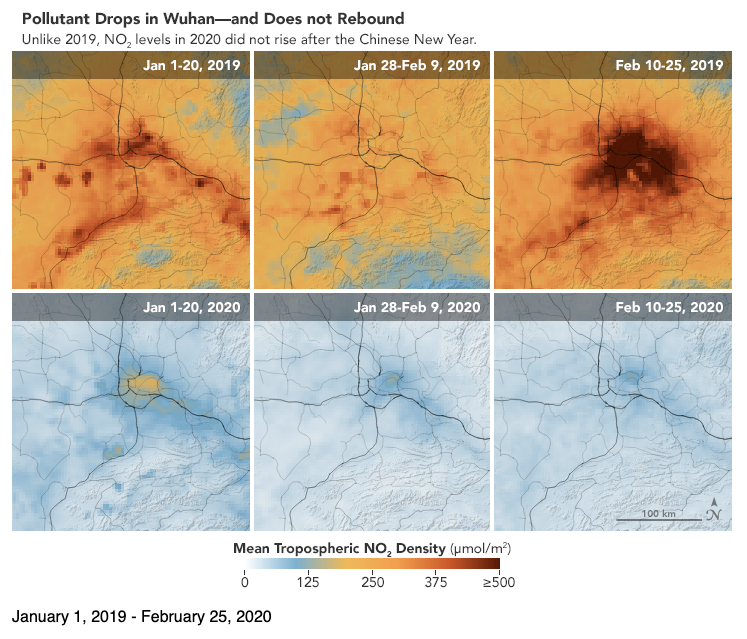World’s biggest workplace experiment: Phase one

It’s been suggested that the only way to halt climate change is to stop focusing on economic growth. Ground planes. Wind down factories. Work less. Live simpler lives.
Unemployment is set to rise: Here are 5 top job-hunting tips
Working from home amid coronavirus: What are the tax implications?
Productivity: How to structure your working from home time
But that’s proven to be an impossible task, with the world cemented in modes of work fashioned in the industrial revolution.
Those work practices include the requirement that workers travel into an office, day in, day out, despite evidence suggesting remote work is also the future of work.
A Stanford University study found that productivity increased 13 per cent and turnover fell 50 per cent when remote work policies were introduced in a Chinese case study, while another recent GitLab study found 82 per cent of people working remotely or who have the option to go remote consider it the future.
But the 9-5 office day has continued to be the reigning structure, frustrating working parents, people with disabilities and those of us who simply can’t bear hour-plus daily commutes and open-plan offices.
Until now.
Covid-19 has forced the majority of Italy’s 23.2 million labour force and China’s 806 million to stop work or work from home, while countries like Spain, France, the USA and Australia begin to impose stricter restrictions on movements, and offices of hundreds of thousands send workers home.
The environmental and economic implications are already vastly evident.

And as Covid-19 continues its rapid spread, it’s forcing more and more companies to figure out how to work in a virtual way.
How the world’s businesses cope with the next few weeks and months will be a test of our office future.
But no matter the outcome, this sudden and involuntary experiment will undoubtedly change the way we work.
Business as usual or business unusual?

Consultancy firm Access Economics in July 2010 said if 10 per cent of Australians worked remotely for 50 per cent of the time, the country would save between $1.4 billion and $1.9 billion a year.
That’s based on transport cost savings, office cost savings and the ability to retain staff who wish to move.
And, importantly, increased workforce participation.
“It’s people with disabilities, military spouses, people with health problems, caretakers, and people living in rural or economically disadvantaged areas. People need and want work flexibility for a lot of different reasons.”
As Bond University Business School assistant professor Libby Sander noted, Covid-19 could well be the tipping point that sees remote work widely normalised.
And as that happens, opportunities for parents and carers who may have previously struggled to obtain flexible working conditions may soon be incorporated into the workforce, in the same way Australians with chronic illnesses and disabilities may also be welcomed into the paid workforce.
“It’s people with disabilities, military spouses, people with health problems, caretakers, and people living in rural or economically disadvantaged areas,” the founder of 1 Million for Work Flexibility founder, Sara Sutton said in the 2019 LinkedIn report.
“People need and want work flexibility for a lot of different reasons.”
Visually impaired activist and campaigner Dr Amy Kavanagh made a similar point on Twitter recently.
“As a disabled person it hurts to see all the adjustments that we’ve been denied suddenly be made available because non-disabled people might get sick,” she said.
As a disabled person it hurts to see all the adjustments that we’ve been denied suddenly be made available because non-disabled people might get sick.
But we will remember, we see you & your ableism.
So next time you deny us accommodations, we will say “but during Coronavirus?”— Dr Amy Kavanagh👩🏼🦯 (@BlondeHistorian) March 7, 2020
“So next time you deny us accommodations, we will say, ‘But during coronavirus?’”
Marcus Gray La Porte echoed the thought: “Things Covid has proven: 1. The job you were told couldn't be done remotely can be done remotely. 2. Many disabled workers could have been working from home, but corporations just didn’t want them to.”
Things Covid has proven:
1. The job you were told couldn't be done remotely can be done remotely
2. Many disabled workers could have been working from home, but corporations just didnt want them to.
3. Internet is a utility, not a luxury
4. Universal healthcare is necessary— Marcus Gray LaPorte (@MarcusGrayDoor) March 12, 2020
However, whether Covid-19 does result in more truly flexible workplaces remains to be seen.
Infrequent flyers

Workplace participation changes remain to be seen, but - as Australian airline Qantas would tell you - the impacts on business travel are gargantuan.
Globally, airlines have been struggling as “stay at home” edicts, or at the very least, “stay in the country” business rules have punched demand lower.
Qantas has suspended all international flights and temporarily stood down two-thirds of its staff, while rival Virgin Australia has also suspended international travel entirely.
But it’s not just international travel - Qantas has suspended 60 per cent of domestic travel while Virgin Australia has halved it as travellers stay home.
Teleconferencing, once used as a backup for in-person meetings, is now being used multiple times daily, with colleagues beamed into each others’ lounge-rooms and kitchens.
And this raises another major question: can our telecommunications firms keep up?
Spotlight on telecommunications and internet
In Australia, that’s unclear.
The Australian National Broadband Network (NBN) saw a 5 per cent increase in traffic on Saturday and its CEO tips that number to increase.
It’s the same story around the world: in the US, telco Comcast has begun offering 60 days of free service and cheaper internet packages, while AT&T will increase data caps to support remote workers.
And in Austria, regulators have given the go ahead for some online services like video streaming to be curtailed to protect the European nation’s internet capacities.
Environmental ramifications
With China effectively at a standstill, scientists observed a corresponding fall in air pollution.

Quarantine restrictions have seen fewer factories running, cars on roads and air travel for business. According to NASA, nitrogen dioxide - which comes from burning fossil fuels, primarily from cars, industrial facilities and power plants - has fallen 30 per cent in the Asian nation.
"This is the first time I have seen such a dramatic drop-off over such a wide area for a specific event," said air quality researcher at NASA's Goddard Space Flight Center, Fei Liu.
“I am not surprised because many cities nationwide have taken measures to minimise the spread of the virus.”
The trend is even more observable in the virus epicentre of Wuhan.
Beyond China, the impacts may also be massive.

“We need to reevaluate our economic model and work regime more fundamentally.”
The World Economic Forum has noted how four-day weeks have the power to significantly curb emissions, just by virtue of the reduced commutes and associated emissions, and the ability to prepare quality, locally-sourced foods, rather than relying on frozen, pre-prepared meals.
“Our current working time and lifestyle models are deeply intertwined with a fundamentally unsustainable economy,” agenda contributor at the World Economic Forum Philipp Frey said in June last year.
“The transformation towards a more sustainable economy needs to go beyond merely cutting back the worst fossil fuel based industries a little: instead, we need to reevaluate our economic model and work regime more fundamentally, combining a move towards sustainable energy with a transformation of our transportation systems and a radical reduction in working hours.”
The trillion-dollar question: Will we actually get more done?

In the four years to January 2019, there was a 24 per cent increase in the number of workers who considered flexible work an important factor when looking for a new job. And over the two years to 2019, LinkedIn marked a 78 per cent increase in the number of job posts mentioning flexibility.
But while we consider it a perk, do we get more done?
Remote work: How to not go crazy while working from quarantine
GitLab has historically had its entire workforce working remotely, and in its recent study, it found 82 per cent of people who work remotely, or who have that option, believe remote work is the future. And 59 per cent believed they were more productive overall.
“You think at the beginning, ‘Okay we have so much time to spend with my daughter, my son,’ but at the end you have to work eight-hour days.”
But for that other 41 per cent, being thrust into remote work situations presents new challenges.
All of Italy is shut down, while global firms like WPP and Twitter have also instructed staff work from home.
A Stanford University study found productivity increased 13 per cent and turnover fell 50 per cent when remote work policies were introduced in a Chinese case study.
Individually, it’s a different story. Especially if you have kids.

Federico Sapienza told Yahoo Finance his biggest challenge is finding ways to keep a stir-crazy 6-year-old entertained while also trying to get his own work done.
“You think at the beginning, ‘Okay we have so much time to spend with my daughter, my son,’ but at the end you have to work eight-hour days, so at times it’s a bit difficult to manage your day, your private life,” he said.
And for some of us, remote work just means more work.
Studies have found remote work can also lead to burnout as the lines between home and work blur and employees work longer and more intense hours.
How companies navigate this will be a major social test, with ramifications not only for productivity but our mental health.
The sound of silence: The impact on mental health

If Covid-19 does trigger a massive overhaul of the way we work, it’ll alter society to its core.
Fewer in-person conversations with colleagues and fewer laughs mean we might get more done, but we could also become miserably lonely and even see damage to our self esteem.
A 2008 study published in the Journal of Applied Psychology found telecommuters can feel less confident, while another study found the impacts were mixed.
Female remote workers are more likely to say remote work helped with caring responsibilities. But sales professionals say this type of work can also lead to suppressed career development as they’re less visible. And remote workers may also feel more isolated in general.
Software giant Atlassian, which is pushing for all companies to go remote in the wake of the virus, launched its huge remote plan in 2019 and has steps in place to prevent employee isolation and promote healthy work limits.
Global head of talent Bek Chee told Yahoo Finance at the time that remote work doesn’t work if employees feel like they’re not part of the team, so Atlassian has “plays” designed to maintain connections.

One of those is just a Slack chat designed to help employees chat, and another is notifications reminding staff to check in with each other at different intervals throughout the day.
On top of that, Atlassian tells staff to make sure home and work are as delineated as possible: no working in bed.
Remote workers need to have a “dedicated space so that you can close the door and it can feel like a separate space”, she said.
While workers are in, the jury is out on the impacts of the world’s biggest workplace experiment.
But as more and more of us set up home offices at kitchen tables, coffee tables and hammocks, the world is in for some interesting results.
We’ll be tracking them at Yahoo Finance.
Make your money work with Yahoo Finance’s daily newsletter. Sign up here and stay on top of the latest money, news and tech news.
Follow Yahoo Finance Australia on Facebook, Twitter, Instagram and LinkedIn.

 Yahoo Finance
Yahoo Finance 
